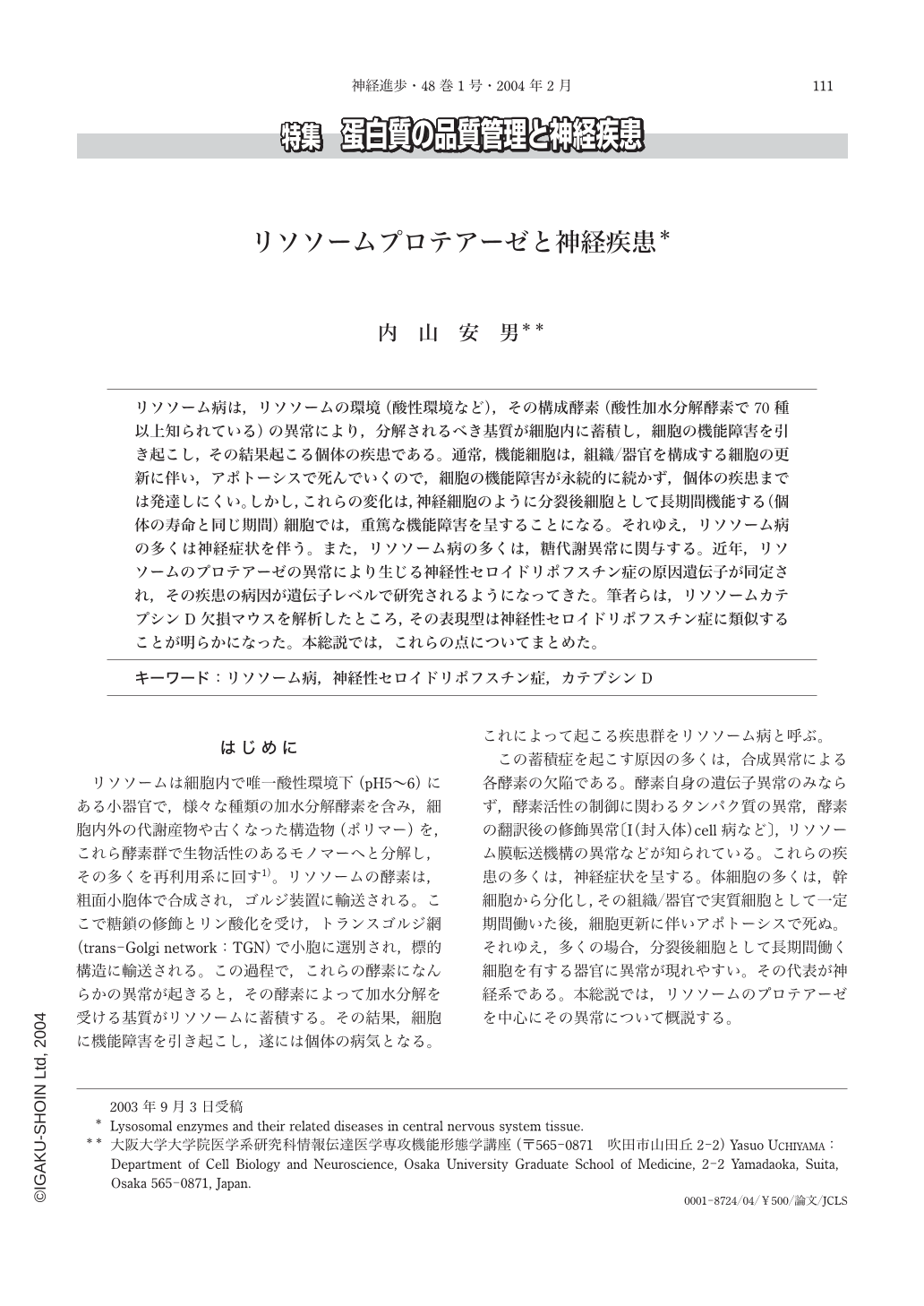Japanese
English
- 有料閲覧
- Abstract 文献概要
- 1ページ目 Look Inside
リソソーム病は,リソソームの環境(酸性環境など),その構成酵素(酸性加水分解酵素で70種以上知られている)の異常により,分解されるべき基質が細胞内に蓄積し,細胞の機能障害を引き起こし,その結果起こる個体の疾患である。通常,機能細胞は,組織/器官を構成する細胞の更新に伴い,アポトーシスで死んでいくので,細胞の機能障害が永続的に続かず,個体の疾患までは発達しにくい。しかし,これらの変化は,神経細胞のように分裂後細胞として長期間機能する(個体の寿命と同じ期間)細胞では,重篤な機能障害を呈することになる。それゆえ,リソソーム病の多くは神経症状を伴う。また,リソソーム病の多くは,糖代謝異常に関与する。近年,リソソームのプロテアーゼの異常により生じる神経性セロイドリポフスチン症の原因遺伝子が同定され,その疾患の病因が遺伝子レベルで研究されるようになってきた。筆者らは,リソソームカテプシンD欠損マウスを解析したところ,その表現型は神経性セロイドリポフスチン症に類似することが明らかになった。本総説では,これらの点についてまとめた。
Lysosomes, membrane-bound organelles present in mammalian cells, are known to contain over 70 hydrolytic enzymes which work in an acidic milieu with pH 5-6 and degrade old, unneeded extra-and intracellular materials into biological monomers most of which are re-used in the cells. Disorders of these enzymes whose genes may be mutated lead to the accumulation of substrates in cells, resulting in disease in individuals. This type of lysosomal accumulation disease is called lysosomal disease. Different from peripheral tissue cells which undergo cell death in certain time periods corresponding to cell renewal, neuronal cells in central nervous system tissue are postmitotic/terminal differentiated cells with long life corresponding to life of individuals. Because of this characteristic feature of neurons the accumulation of substrates in neuronal cells results in neuronal dysfunction anddeath. Most types of lysosomal disease are involved in metabolic disorders of lipids, mucopolysaccharides and glycoproteins. Recent studies on lysosomal disease due to disorders of soluble and membrane bound proteins related to lysosomes in CNS tissue cells, which are called neuronal ceroid-lipofuscinoses(NCLs), have revealed various causative genes of NCLs(CLN). We have also found that cathepsin D deficiency(CD-/-)induces the accumulation of ceroid-lipofuscin in lysosomes of neurons in mouse brain tissue. Phenotypes of CD-/-mice, which consist of appearance of autofluorescence, accumulation of subunit c of mitochondrial ATP synthase in lysosomes, and accumulation of lysosomal structures called granular osmiophilic deposits and finger-print profiles in neuronal perikarya, are similar to those of NCLs. The present paper will review recent understanding of NCLs and introduce our recent data on precise phenotypes of CD-/-mice.
(Received:September 3, 2003)

Copyright © 2004, Igaku-Shoin Ltd. All rights reserved.


